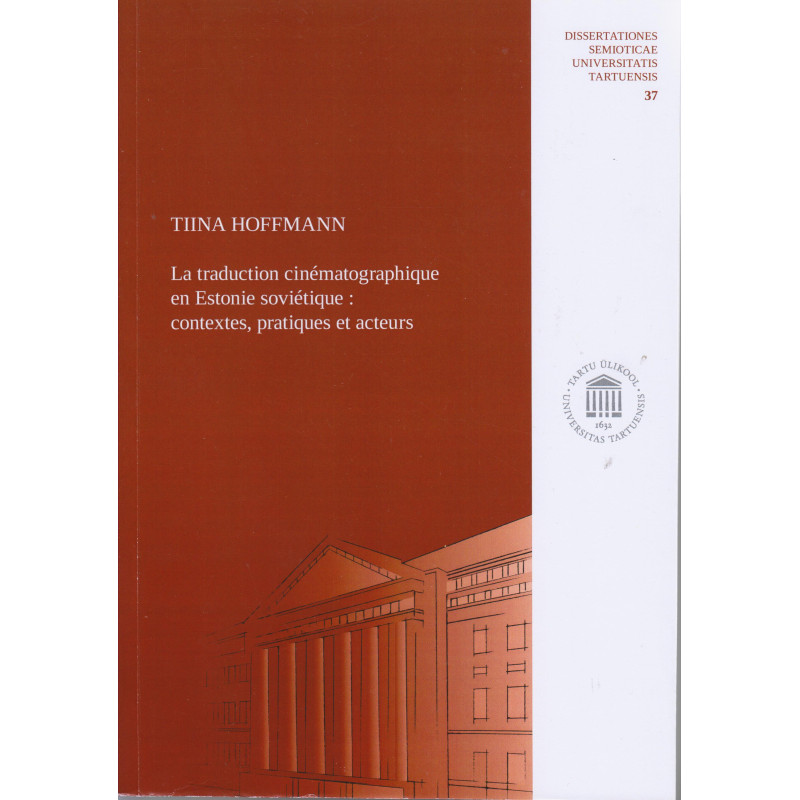



Tartu : University of Tartu Press, 2021
489 p.
Paperback, in very good condition.
Theses(doctorate): Film translation in Soviet Estonia: contexts, practices and actors.
Series: Dissertationes semioticae Universitatis Tartuensis ; 37. Summary in Estonianand English.
This thesis is a diachronic analysis of the linguistic, technical and ideological conditions of audiovisual translation (AVT) in Soviet Estonia. The analysis focuses on reconstructing the history of AVT, comparing practices in the first Republic of Estonia with Soviet AVT censorship. The tumultuous years between 1939 and 1944 are analyzed as well as the Stalinist era with the distribution of trophy films and foreign films in the post-Stalinist USSR. By studying the different modes of AVT and the policy of film repertory both in cinemas and cinema clubs, two opposing poles emerge following Youri Lotman’s theory: on the one hand, in the center of semiosphere the official cinemas practicing indirect translation from Russian, and on the other hand, in periphery of the USSR, Estonian cinema clubs where new representations were coined by practicing free and intensive translation activity from foreign languages. The thesis also focuses on dubbing and reassembly as a Soviet adaptation supporting the idea of the multinational USSR, being namely a collective transcreation that served as the text of the authorized discourse for all Soviet republics. Estonian subtitling, a unique phenomenon in the context of film translation practices, made of Estonia a center of excellence for subtitling in the USSR. Several ad hoc approaches are used: post-colonial studies, case studies, theories of cultural semiotics and empirical research. The thesis also sheds light on the multiple identities of film translators in their emerging community in the late 1960s.